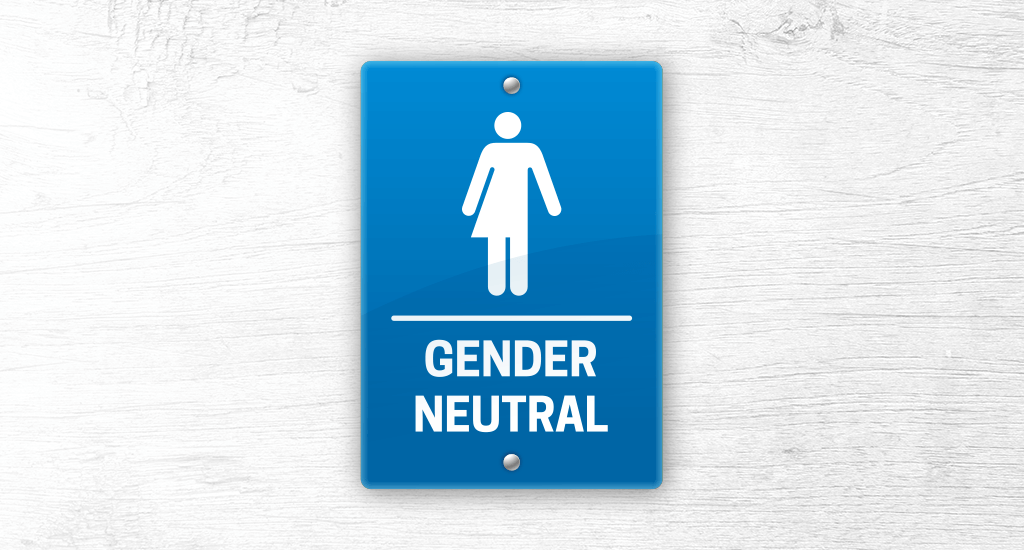gender-neutral

gender-neutral – aggettivo
gender neutrality – sostantivo
A primary school is introducing a gender-neutral uniform policy allowing boys and girls to wear either a skirt or trousers.
To avoid offending someone at the office, consider using these gender–neutral pronouns in your workplace conversations.
My husband and I told my father-in-law that, whatever the sex of our unborn child, we would call it ‘Baby’ – and raise it gender neutral.
In July 2018, the European Parliament published the handbook ‘Gender neutrality in the language used in the European Parliament.‘
La gender neutrality, o neutralità di genere, consiste essenzialmente nell’evitare preconcetti e stereotipi basati sul genere. A seconda del contesto, l’aggettivo gender-neutral ha sfumature di significato: se accompagna sostantivi come ‘bagni pubblici’ o ‘abbigliamento’, ad esempio, vuol dire unisex, mentre un approccio genitoriale gender-neutral si concretizza nell’allevare i figli senza stereotipi e pregiudizi su cosa sia adatto a un maschio o a una femmina. Un linguaggio gender-neutral, o gender-inclusive, rifugge dall’usare termini che definiscano l’identità di genere – in inglese ad esempio sostituendo pronomi come ‘he’ o ‘she’ con l’equivalente gender-neutral ‘they’, o il titolo ‘Mx’ al posto di ‘Mr’, ‘Mrs’ o ‘Ms’ o ancora usando parole come ‘firefighter’ o ‘flight attendant’ invece che ‘fireman’ o ‘stewardess’.
Origini del termine
Gender-neutral è un aggettivo composto dal sostantivo gender e l’aggettivo neutral. Entrato nel linguaggio negli ultimi decenni del XX secolo ha conosciuto un’impennata d’uso in tempi recenti in seguito all’interesse e al dibattito sulle questioni di genere.
Traduzione di Loredana Riu
gender-neutral – adjective
gender neutrality – noun
A primary school is introducing a gender-neutral uniform policy allowing boys and girls to wear either a skirt or trousers.
To avoid offending someone at the office, consider using these gender–neutral pronouns in your workplace conversations.
My husband and I told my father-in-law that, whatever the sex of our unborn child, we would call it ‘Baby’ – and raise it gender neutral.
In July 2018, the European Parliament published the handbook ‘Gender neutrality in the language used in the European Parliament.‘
Gender neutrality essentially involves not making assumptions about people based on gender, and not trying to force people into gender roles they feel uncomfortable with. The adjective gender-neutral has different shades of meaning depending on the context in which it used. Gender-neutral places and facilities can be used by people of any gender identity or none. Gender-neutral clothing can be worn by anyone, while gender-neutral parenting involves allowing a young child to explore different gender identities without imposing any particular one on them. Gender-neutral language, also called gender-inclusive language, avoids the use of words that define gender identity. This can mean replacing pronouns like ‘he’ or ‘she’ with a gender-neutral equivalent such as ‘they’, or using a title such as ‘Mx’ instead of ‘Mr’, ‘Mrs’ or ‘Ms’. It also means using terms like ‘firefighter’ or ‘flight attendant’ in preference to gendered terms like ‘fireman’ or ‘stewardess’.
Origin
The term gender-neutral is a compound adjective formed from the noun gender and the adjective neutral. After coming into use in the later decades of the 20th century it has surged in popularity as a result of increased interest in and discussions of gender in the present century.



